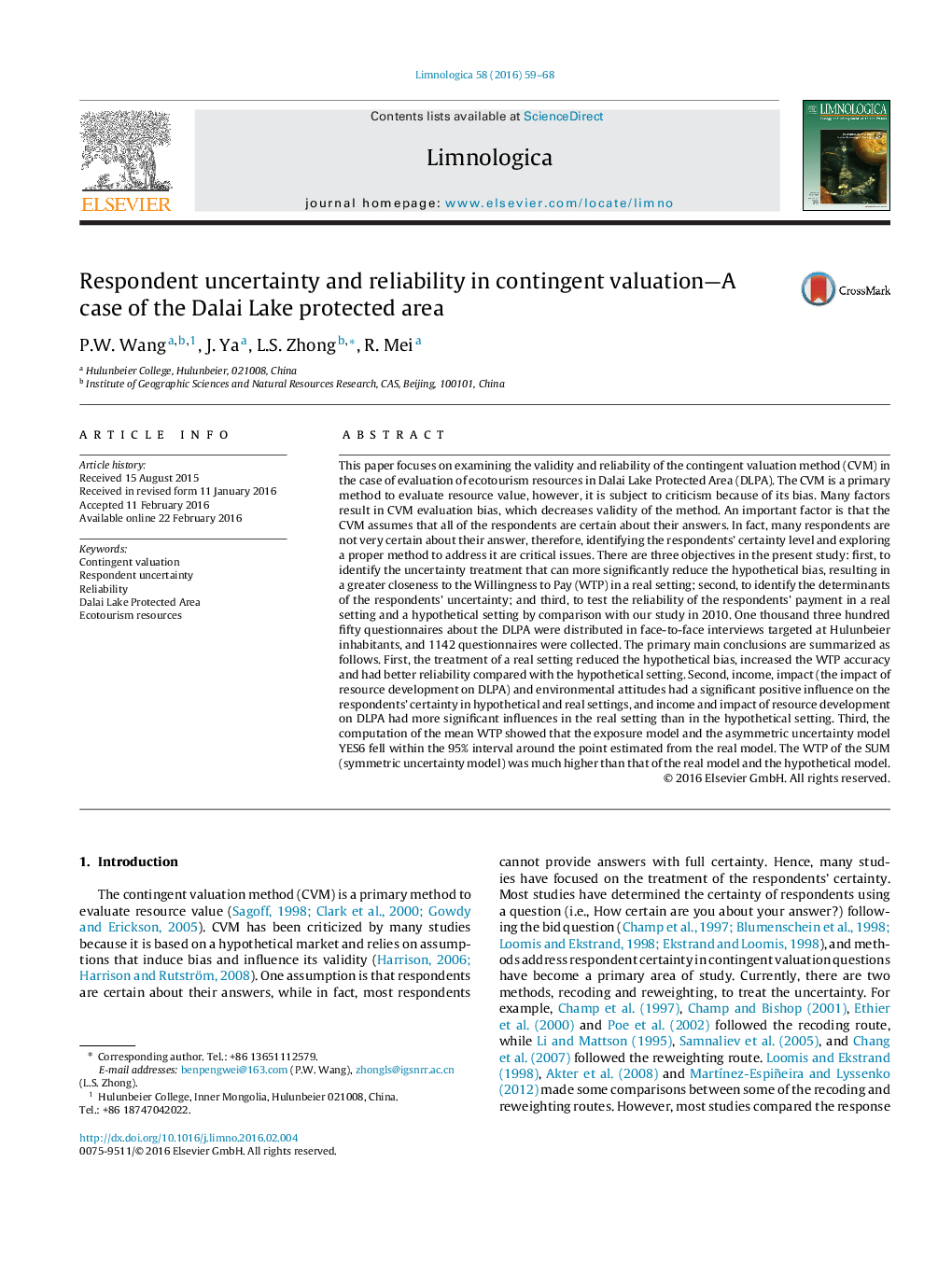| کد مقاله | کد نشریه | سال انتشار | مقاله انگلیسی | نسخه تمام متن |
|---|---|---|---|---|
| 4400339 | 1618564 | 2016 | 10 صفحه PDF | دانلود رایگان |
This paper focuses on examining the validity and reliability of the contingent valuation method (CVM) in the case of evaluation of ecotourism resources in Dalai Lake Protected Area (DLPA). The CVM is a primary method to evaluate resource value, however, it is subject to criticism because of its bias. Many factors result in CVM evaluation bias, which decreases validity of the method. An important factor is that the CVM assumes that all of the respondents are certain about their answers. In fact, many respondents are not very certain about their answer, therefore, identifying the respondents’ certainty level and exploring a proper method to address it are critical issues. There are three objectives in the present study: first, to identify the uncertainty treatment that can more significantly reduce the hypothetical bias, resulting in a greater closeness to the Willingness to Pay (WTP) in a real setting; second, to identify the determinants of the respondents’ uncertainty; and third, to test the reliability of the respondents’ payment in a real setting and a hypothetical setting by comparison with our study in 2010. One thousand three hundred fifty questionnaires about the DLPA were distributed in face-to-face interviews targeted at Hulunbeier inhabitants, and 1142 questionnaires were collected. The primary main conclusions are summarized as follows. First, the treatment of a real setting reduced the hypothetical bias, increased the WTP accuracy and had better reliability compared with the hypothetical setting. Second, income, impact (the impact of resource development on DLPA) and environmental attitudes had a significant positive influence on the respondents’ certainty in hypothetical and real settings, and income and impact of resource development on DLPA had more significant influences in the real setting than in the hypothetical setting. Third, the computation of the mean WTP showed that the exposure model and the asymmetric uncertainty model YES6 fell within the 95% interval around the point estimated from the real model. The WTP of the SUM (symmetric uncertainty model) was much higher than that of the real model and the hypothetical model.
Journal: Limnologica - Ecology and Management of Inland Waters - Volume 58, May 2016, Pages 59–68
